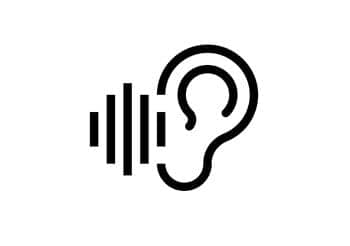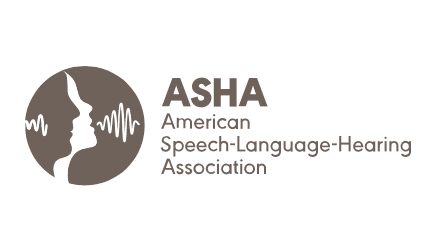The Consumer Technology Association (CTA) released a new logo associated with CTA’s high-performance standard for wearable hearing devices, CTA announced on its website. According to the announcement, wearable devices represent a new, future class of over-the-counter hearing aids for consumers with mild-to-moderate hearing loss (also known as personal sound amplification or enhancement devices).
CTA unveiled the new logo at the Hearing Loss Association of America (HLAA) Convention held June 22-25 in Salt Lake City, Utah. Developed and approved by CTA, the organization says the new logo and standard will help consumers in the future distinguish high-quality hearing enhancement devices for mild-to-moderate hearing loss from what the CTA says are “ineffective” personal amplifiers commonly found today. In recent US Federal Trade Commission (FTC) and National Academy of Sciences, Engineering, and Medicine (NASEM) workshops, the CTA’s Bill Belt has been a vociferous and controversial proponent of the logo for the PSAP performance criteria being advocated by CTA. As noted at the June 9 FTC workshop, several elements of the criteria—including the output limit of the devices (120 dB OSPL90 in a 2cc coupler)—were criticized by the hearing care professionals and the hearing industry.
“The new logo and standard mark another important milestone in the evolution of wearable hearing devices,” said Gary Shapiro, CTA president and CEO. “With the industry agreeing on a common standard and logo, we can now better help the almost 40 million Americans who live with some form of hearing loss. In addition to educating consumers about these revolutionary over-the-counter hearing enhancement solutions, this logo and standard give Congress and the Food and Drug Administration (FDA) pre-packaged information and guidelines as they explore creating a new class of over-the-counter hearing aids.”
“As we look to the future of wearable hearing devices sold directly to consumers, this type of logo indicating high-quality standards will be important for people seeking help for their hearing loss,” said Barbara Kelley, executive director, HLAA. “The CTA logo is an important seal of approval.”
CTA’s Personal Sound Amplification Performance Criteria standard (ANSI/CTA-2051) sets minimum performance requirements for devices to be distinguished as providing high-quality amplification enhancement. The goal of the logo and standard is to assure the FDA and consumers that manufacturers who design to this standard have built high-quality, reliable, over-the-counter hearing devices that will ultimately improve the quality of life for millions of Americans, said CTA.
“The standard and logo are timely,” said Poppy Crum, chief scientist, Dolby Laboratories and co-chair for development of the standard. “They are key ingredients to the success of these devices and innovations reaching the consumers who will most benefit. It is all part of closing the existing gap between technological device capability and consumer reach. The standard and logo empower the consumer and give insight to the performance capabilities of the device in a simple way—setting a bar where the consumer will be assured a quality experience in a device class that has long been mired by heterogeneity in performance.”
Personal sound amplification products (PSAPs) are affordable, readily available, and come at a price more in line with what American consumers are willing to spend to improve their hearing than their traditional counterparts, said CTA. According to CTA’s Personal Sound Amplification Products: a Study of Consumer Attitudes and Behavior, price is a significant barrier for seeking help with a hearing impairment. A pair of traditional hearing aids can cost anywhere from $1,000 to $6,000. In contrast, non-prescription devices such as PSAPs, are one-tenth the cost, ranging in price from $100 to $600 for a pair.
Additionally, according to CTA, devices that are designed primarily to amplify ambient sound are expected to sell 1.5 million individual units in 2017 (an increase of 40 percent year-over-year) and earn $225 million dollars in revenue. Another 50% growth is expected in 2018 as awareness of these devices grow.
According to FDA regulations dating back to the 1970s, PSAPs cannot be labeled or promoted as intended to help adults with mild-to-moderate hearing loss. However, the US House and Senate have introduced a bi-partisan, bicameral bill that would allow the FDA to create a marketplace for OTC hearing aids.
Source: CTA and HR





